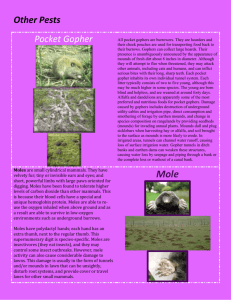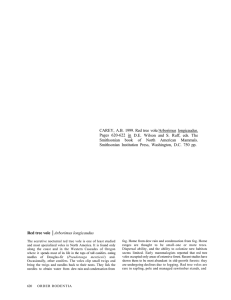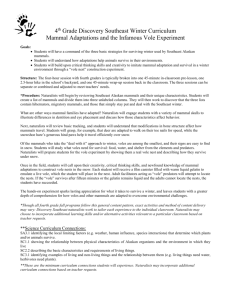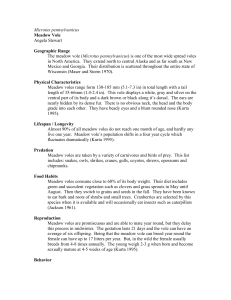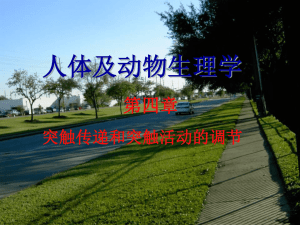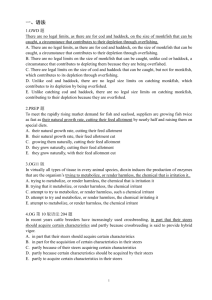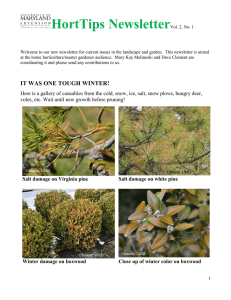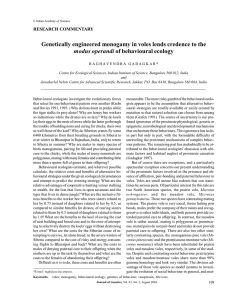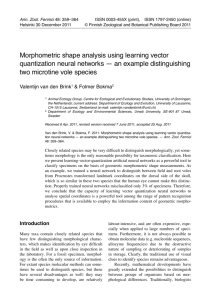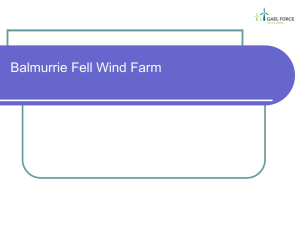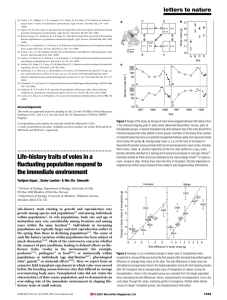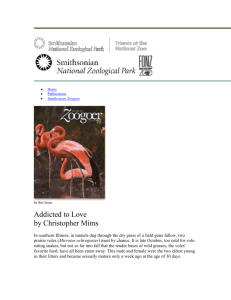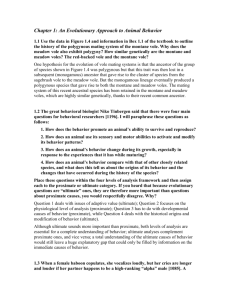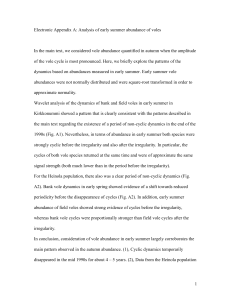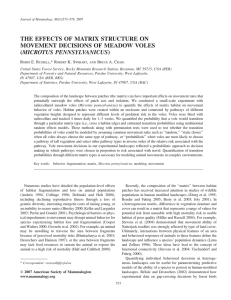Thank you for taking part in our Water Vole Survey 2014, every bit of
advertisement
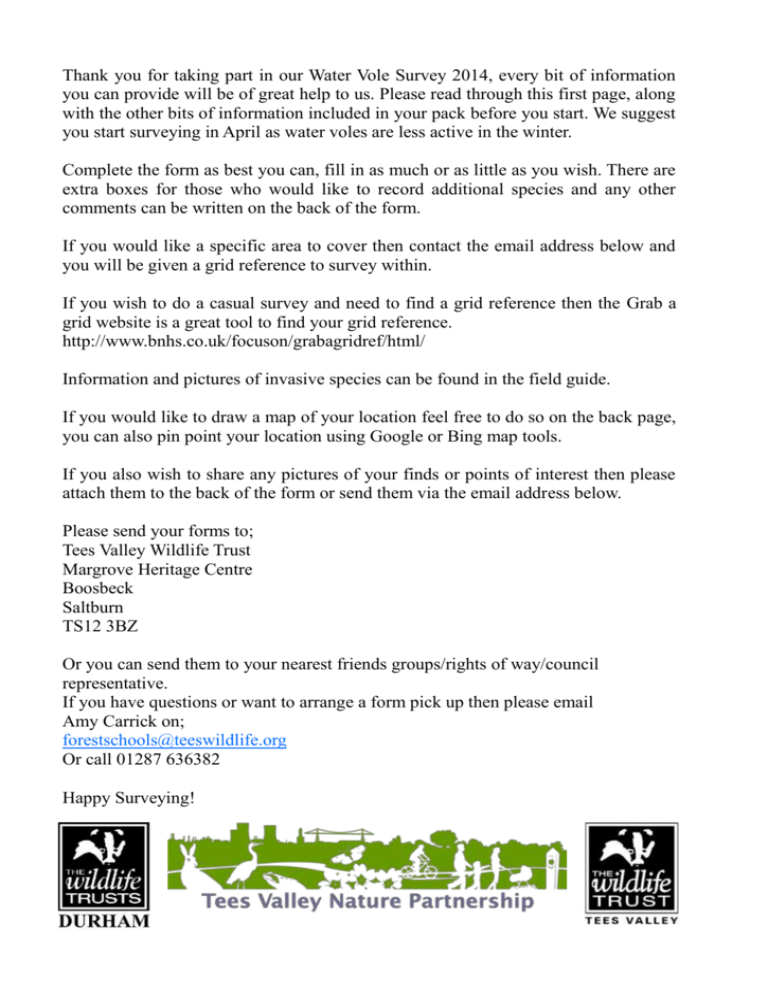
Thank you for taking part in our Water Vole Survey 2014, every bit of information you can provide will be of great help to us. Please read through this first page, along with the other bits of information included in your pack before you start. We suggest you start surveying in April as water voles are less active in the winter. Complete the form as best you can, fill in as much or as little as you wish. There are extra boxes for those who would like to record additional species and any other comments can be written on the back of the form. If you would like a specific area to cover then contact the email address below and you will be given a grid reference to survey within. If you wish to do a casual survey and need to find a grid reference then the Grab a grid website is a great tool to find your grid reference. http://www.bnhs.co.uk/focuson/grabagridref/html/ Information and pictures of invasive species can be found in the field guide. If you would like to draw a map of your location feel free to do so on the back page, you can also pin point your location using Google or Bing map tools. If you also wish to share any pictures of your finds or points of interest then please attach them to the back of the form or send them via the email address below. Please send your forms to; Tees Valley Wildlife Trust Margrove Heritage Centre Boosbeck Saltburn TS12 3BZ Or you can send them to your nearest friends groups/rights of way/council representative. If you have questions or want to arrange a form pick up then please email Amy Carrick on; forestschools@teeswildlife.org Or call 01287 636382 Happy Surveying! Please read the following water vole habitat information to ensure you are starting at the right point. Water Voles mainly occur along well vegetative high sided banks along becks, rivers, ditches, dykes, canals and lakes. The suitability of these banks are dependent on the height of the bank for burrowing, refuge from high water levels in winter and the availability of food all year round. Slow moving water courses which provide a permanent source of water throughout the year are favoured by Water Voles. Long varying types of vegetation are key to a water voles habitat for feeding, cover and nest making. Vegetation can include reeds, rushes, sedges, grasses, water plants and wildflowers as a source of food and for dry nest making. Sites with a large population of trees and scrub are not favoured by water voles due to the excessive shading on the bankside, which will prevent vegetation growth. Densely industrialised areas along with concreted banks are also not favoured by water voles. Ensure the area you’re surveying contains the features in the above information. If you find one of the following in the area you are surveying please continue to another part of the water course, this is due to the relative unlikeness that there are water voles present. Dense woodland High sided concrete banks Industrialised area Background Information Borough Site Name/River Grid Reference Start Grid Reference End Surveyor Date of Survey Habitat Information Habitat Bankside Vegetation Trees Invasive Species Ditch Bare Soil Saplings Himalayan Balsa Pond Tall Grass Mature Giant Hogweed Lake Reservoir Short Grass Over hanging branches Crassula Helmsii Stream Reeds/Sedges Scrub/Bushes Japanese Knotweed Marsh Nettles/Thistles Beck Wildlflowers Dominant Species Other Species Occasional Species Water Vole Information Water Vole Signs Species of wildflowers/trees Disturbance (e.g walkers, dogs, Potential Signs fly tipping, smells etc) Sightings Droppings Unused burrows Latrines Burrows Plop Two Burrows Footprints Runs Cropped grass around burrow Wildlife Information (No.of each) Bordering Land Use Otter Otter Signs Woodland Meadow Mink Mink Signs Industrial Other Rat Rat Signs Housing Kingfisher Other Wildlife of Interest Grazing Land Dipper Arable Land Banded Demoiselle Recreational Land Optional Map Sketch a rough map of your survey area on this page. Mark the location of water vole signs and other features of interest. You can be as brief or detailed as you like. You may also insert photos, ordnance survey maps or Google/Bing maps.
